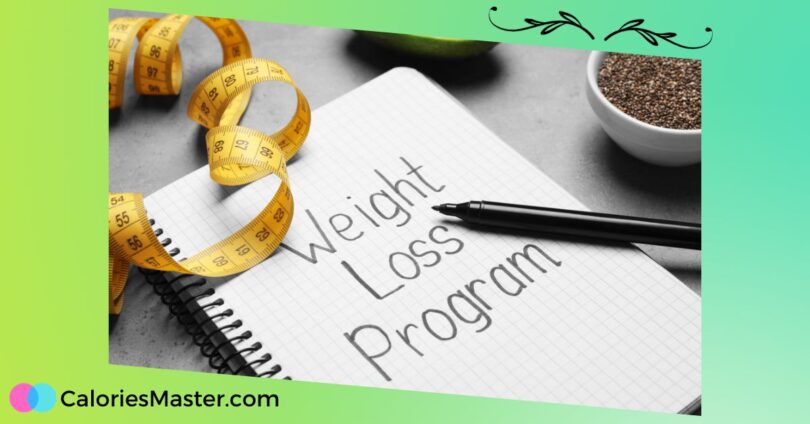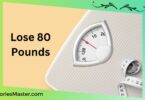Losing weight can be a challenging and frustrating journey for many people. With so many diets and exercise programs available, it can be overwhelming to know where to start. However, a well-designed weight loss program can make all the difference in achieving your goals.
A good weight loss program involves a combination of healthy eating habits, regular exercise, and lifestyle changes.
It should be tailored to your individual needs and preferences, taking into account factors such as your age, gender, weight, and overall health. The program should also be sustainable, encouraging long-term behaviour change rather than quick fixes.
By following a well-designed weight loss program, you can not only achieve your desired weight loss goals but also improve your overall health and wellbeing. With the right support and guidance, you can make lasting changes to your lifestyle and enjoy a happier, healthier life.
Understanding Weight Loss
Losing weight can be a challenging process, but with the right approach, it is achievable. It is essential to understand how weight loss works to achieve your goals effectively.
Calories and Weight Loss
Calories are the units of energy that our body needs to function. When we consume more calories than we burn, our body stores the excess calories as fat, leading to weight gain. On the other hand, when we burn more calories than we consume, our body uses the stored fat for energy, leading to weight loss.
Healthy Eating Habits
To lose weight, it is crucial to maintain a calorie deficit by eating a healthy, balanced diet. Eating a diet rich in fruits, vegetables, whole grains, and lean protein can help you feel full and satisfied while consuming fewer calories.
It is also essential to limit your intake of processed foods, sugary drinks, and high-fat foods, which are often high in calories and low in nutrients.
Physical Activity
Physical activity is an essential component of weight loss. Regular exercise can help you burn calories, increase muscle mass, and improve your overall health.
Incorporating both cardiovascular exercise, such as running or cycling, and strength training, such as weightlifting or resistance band workouts, can help you build muscle and burn fat.
Key takeaways:
Understanding the basics of weight loss, including the role of calories, healthy eating habits, and physical activity, can help you achieve your weight loss goals. By adopting a healthy lifestyle, you can not only lose weight but also improve your overall health and well-being.
Importance of a Balanced Diet
A balanced diet is essential for maintaining a healthy weight and overall well-being. It is important to consume a variety of foods from different food groups to ensure that your body receives all the necessary nutrients.
Role of Proteins
Proteins are essential for building and repairing tissues in the body. They also play a crucial role in the growth and development of muscles. It is important to consume adequate amounts of protein to maintain muscle mass and prevent muscle loss during weight loss.
Sources of protein include:
- Lean meat
- Fish
- Eggs
- Beans and legumes
- Nuts and seeds
Role of Carbohydrates
Carbohydrates are the primary source of energy for the body. They are essential for maintaining normal brain function and physical activity. However, it is important to choose complex carbohydrates such as whole grains, fruits, and vegetables, as they provide sustained energy and are rich in fibre.
Sources of carbohydrates include:
- Whole grains
- Fruits and vegetables
- Legumes
- Dairy products
Role of Fats
Fats are essential for the absorption of certain vitamins and minerals, and they also provide energy. However, it is important to consume healthy fats such as monounsaturated and polyunsaturated fats, as they help to reduce the risk of heart disease.
Sources of healthy fats include:
- Avocado
- Nuts and seeds
- Olive oil
- Fatty fish
In summary, a balanced diet is essential for maintaining a healthy weight and overall well-being. It is important to include a variety of foods from different food groups to ensure that your body receives all the necessary nutrients.
Exercise and Weight Loss
Regular exercise is an essential component of any weight loss program. It not only helps to burn calories but also helps to improve overall health and fitness. Three main types of exercises are beneficial for weight loss: cardiovascular exercises, strength training, and flexibility exercises.
Cardiovascular Exercises
Cardiovascular exercises, also known as aerobic exercises, are activities that increase heart rate and breathing rate. These exercises are effective for burning calories and improving cardiovascular health. Some examples of cardiovascular exercises include:
- Brisk walking
- Jogging
- Cycling
- Swimming
- Dancing
To get the most out of cardiovascular exercises, it is recommended to do them for at least 30 minutes a day, five days a week. Gradually increase the intensity and duration of the exercises to challenge yourself and achieve better results.
Strength Training
Strength training, also known as resistance training, is an effective way to build muscle and increase metabolism. This type of exercise involves using weights or resistance bands to work against the force of gravity. Some examples of strength training exercises include:
- Squats
- Lunges
- Push-ups
- Pull-ups
- Deadlifts
It is recommended to do strength training exercises at least two days a week, targeting all major muscle groups. Gradually increase the weight and intensity of the exercises to challenge yourself and achieve better results.
Flexibility Exercises
Flexibility exercises, also known as stretching exercises, are important for improving range of motion and preventing injuries. These exercises involve stretching muscles and joints to improve flexibility and mobility. Some examples of flexibility exercises include:
- Yoga
- Pilates
- Tai Chi
- Stretching
It is recommended to do flexibility exercises at least two days a week, focusing on all major muscle groups. Hold each stretch for at least 10-30 seconds and repeat each stretch two to four times.
Incorporating all three types of exercises into your weight loss program can help you achieve better results and improve overall health and fitness.
Importance of Hydration
Hydration is an essential aspect of any weight loss program. It involves maintaining the right balance of fluids in the body to ensure optimal health and well-being. Here are some reasons why hydration is crucial for weight loss:
1. Helps to Control Appetite
Drinking water before meals can help to reduce appetite, leading to a lower calorie intake. This is because water takes up space in the stomach, making you feel full and less likely to overeat.
2. Increases Metabolism
Drinking enough water can boost your metabolism, which is the rate at which your body burns calories. This means that you can burn more calories even when you are at rest.
3. Flushes Out Toxins
Water helps to flush out toxins from the body, which can otherwise hinder weight loss efforts. When the body is dehydrated, it can’t eliminate waste products efficiently, leading to a build-up of toxins.
4. Improves Exercise Performance
Drinking enough water before, during, and after exercise can help to improve performance and endurance. This means that you can exercise for longer and burn more calories.
5. Prevents Water Retention
Drinking enough water can help to prevent water retention, which can make you look and feel bloated. When the body is dehydrated, it tends to hold on to water, leading to puffiness and swelling.
In conclusion, staying hydrated is crucial for any weight loss program. By drinking enough water, you can control your appetite, boost your metabolism, flush out toxins, improve exercise performance, and prevent water retention.
Setting Realistic Goals
When it comes to losing weight, setting realistic goals is key to success. You should be honest with yourself about what you can achieve and set goals that are achievable within a reasonable timeframe.
Here are some tips for setting realistic weight loss goals:
- Be specific: Rather than setting a vague goal like “lose weight”, be specific about how much weight you want to lose and by when.
- Make it measurable: Use a scale or body measurements to track your progress and make adjustments as needed.
- Be realistic: Don’t set a goal that is too ambitious or unrealistic. Losing 1-2 pounds per week is a healthy and achievable goal for most people.
- Consider your lifestyle: Think about your current lifestyle and how you can make small changes to support your weight loss goals. For example, if you currently eat fast food for lunch every day, aim to pack a healthy lunch at least three times a week.
- Celebrate small victories: Celebrate your progress along the way, even if it’s just a small victory like fitting into a pair of jeans that didn’t fit before.
Remember, losing weight is a journey and it’s important to set goals that are achievable and sustainable. By setting realistic goals and making small changes to your lifestyle, you can achieve long-term success.
Monitoring Progress
Monitoring your progress is an essential part of any weight loss program. It helps you stay motivated and on track towards your goals. There are several ways to track your progress, and it’s essential to find the one that works best for you.
One of the most common ways to monitor progress is by tracking your weight. You can do this by weighing yourself regularly, such as once a week. It’s important to remember that weight can fluctuate, so it’s essential to look at the trend over time rather than focusing on daily fluctuations.
Another way to monitor progress is by taking measurements. You can measure your waist, hips, arms, and thighs and track changes over time. This can be a helpful way to see progress, even if the scale isn’t moving.
Tracking your food intake is another way to monitor progress. You can use a food diary or an app to track what you eat and how many calories you consume. This can help you identify areas where you may need to make changes and help you stay accountable.
Finally, tracking your exercise is an essential part of monitoring your progress. You can track the duration and intensity of your workouts and see how you improve over time. This can help you stay motivated and continue to challenge yourself.
Remember, monitoring progress is not about perfection. It’s about tracking your progress and making adjustments as needed to reach your goals. By finding a method that works for you and staying consistent, you can achieve success in your weight loss journey.
Dealing with Plateaus
Losing weight is a journey that comes with many ups and downs. One of the most frustrating moments of this journey is when you hit a plateau. A plateau is a period when you stop losing weight despite sticking to your weight loss program. Here are some tips to help you deal with plateaus:
1. Re-evaluate your diet
It’s essential to review your diet when you hit a plateau. You might have gotten used to eating the same foods, and your body has adapted to the routine. Try changing your meals and incorporating more protein and fibre-rich foods. Also, avoid consuming too many calories.
2. Increase your physical activity
If you’ve been doing the same exercises for a while, it’s time to switch things up. Try new exercises or increase the intensity of your workout. You could also try incorporating strength training into your routine.
3. Get enough sleep
Sleep is essential for weight loss. Lack of sleep can lead to hormonal imbalances that can affect your metabolism. Aim to get at least 7-8 hours of sleep every night.
4. Stay hydrated
Drinking enough water can help you lose weight. It helps to flush out toxins from your body and keeps you feeling full. Aim to drink at least 8 glasses of water every day.
5. Stay motivated
Plateaus can be discouraging, but it’s essential to stay motivated. Remember why you started your weight loss journey and focus on your goals. Celebrate your successes, no matter how small they may be.
In conclusion, plateaus are a natural part of the weight loss journey. However, by following these tips, you can overcome them and continue to make progress towards your weight loss goals.
Maintaining Weight Loss
Once you have achieved your weight loss goals, it is important to maintain your progress to prevent weight regain. Here are some tips to help you maintain your weight loss:
1. Continue to Monitor Your Food Intake
Even if you have reached your desired weight, it is important to continue monitoring your food intake. This will help you maintain your weight loss and prevent any further weight gain. Consider using a food diary to keep track of what you eat and drink.
2. Stay Active
Regular physical activity is essential for maintaining weight loss. Aim to incorporate at least 150 minutes of moderate-intensity exercise or 75 minutes of vigorous-intensity exercise per week. This can include activities such as brisk walking, cycling, swimming or running.
3. Make Healthy Food Choices
Making healthy food choices is important for maintaining weight loss. Focus on eating a variety of nutrient-dense foods, such as fruits, vegetables, whole grains, lean protein and healthy fats. Avoid processed and high-calorie foods.
4. Set Realistic Goals
Setting realistic goals can help you maintain your weight loss. Instead of focusing on losing more weight, set goals that focus on maintaining your current weight. This can include goals such as maintaining a regular exercise routine or eating a certain number of servings of fruits and vegetables each day.
5. Seek Support
Seeking support from friends and family can help you maintain your weight loss. Consider joining a support group or working with a registered dietitian or personal trainer to help you stay on track.









